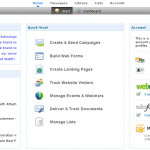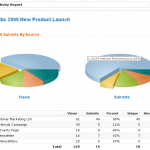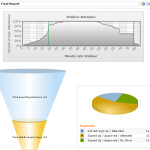Unfortunately the flu got the better of me last week, so my blogging and Twittering came to a halt. But let’s make the best of it, and collect a list of news from the past week. Lots of interesting things happened, and insightful articles were published. I probably missed several things, but these are the highlights:
Top-5 B2B Marketing tips
Jon Miller at Marketo summarizes the key findings of several B2B marketing thought leadership interviews.
1.Start with a solid base
2.Use Push AND Pull Tactics
3.Integrate Your Efforts
4.Innovate
5.Test, Test and Retest
Market2Lead 4.0 released
Market2Lead has launched version 4.0 with a completely revamped user interface. I was planning to write a short review, but haven’t found time for this yet. To be continued…
B2B marketing is Obsolete
Laura Ramos has published the final piece in the “Obsolescence of B2B marketing” series.
1.Build a marketing-only database to capture buyer insight
2.Shift from simply generating demand to managing it
3.Combine digital and traditional tactics to build dialogue around needs and motivations
4.Embrace the groundswell and community marketing principles
Social Media and B2B Marketing
Steve Woods wrote this blog post that gives some great ideas on how to use social media for B2B marketing.
1.Set your information free
2.Focus on being credible
3.Understand their buying process
4.Match your marketing to their buying process
5.Keep interest high through nurturing
6.Only sell when they are ready to buy
10 Tips For Tweeting A Live Conference
Mike Damphousse wrote an interesting article for those who want to use Twitter for PR, in this case for the coverage of an industry conference (the Sales 2.0 conference next week in San Francisco). I will also attend this conference, so let me know if you want to meet up!
Vtrenz changes name to Silverpop Engage B2B
After being acquired by Silverpop, Vtrenz continued under its own name for a while, but now the name has changed to Silverpop Engage B2B. Which makes me wonder: do they rule out using Engage for high-value B2C sales processes? In any case, it’s good they make a clear choice and are developing a new brand for this established marketing automation product.
Marketo 3.0 First Look
David Raab got a sneak preview of the new release of Marketo and writes about usability aspects of Demand Generation systems in general.
Genius.com announces Genius Enterprise
Apparently it’s the week for new releases: also Genius.com is preparing a new product: Genius Enterprise. Key new features are automated lead nurturing and lead scoring. David Raab again has the scoop.
DemandGen Report Sales & Marketing Alignment Awards
Last week I wrote about the Stevie Awards and complained that few vendors had submitted their customer case studies. This week the DemandGen Report announced the winners of their Sales & Marketing alignment awards. The winners are:
- Enterprise Category: eTrique implementation at Cisco
- SMB category: Eloqua implementation at Sourcefire
- Fast Track category: Genius implementation at ADX
I hope this overview is useful. Please add a comment to give your feedback, or to report important events that I’ve missed. Thanks!

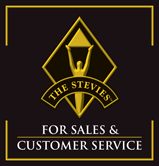 The
The 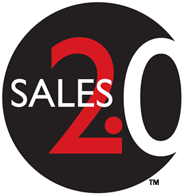 “Sales 2.0 brings together customer-focused methodologies and productivity-enhancing technologies that transform selling from an art to a science. Sales 2.0 relies on a repeatable, collaborative and customer-enabled process that runs through the sales and marketing organization, resulting in improved productivity, predictable ROI and superior performance.” – Pelin Wood Thorogood and Gerhard Gschwandtner
“Sales 2.0 brings together customer-focused methodologies and productivity-enhancing technologies that transform selling from an art to a science. Sales 2.0 relies on a repeatable, collaborative and customer-enabled process that runs through the sales and marketing organization, resulting in improved productivity, predictable ROI and superior performance.” – Pelin Wood Thorogood and Gerhard Gschwandtner The key to their approach is an advanced lead nurturing engine, to avoid “follow-up failure”. They claim that the first sale usually takes place after 7 follow-ups, but that most sellers stop following-up after 3 tries. A convincing story, and thousands of customers are using InfusionSoft, so it must be working.
The key to their approach is an advanced lead nurturing engine, to avoid “follow-up failure”. They claim that the first sale usually takes place after 7 follow-ups, but that most sellers stop following-up after 3 tries. A convincing story, and thousands of customers are using InfusionSoft, so it must be working. Genius.com
Genius.com  Loopfuse, a provider of open source marketing automation and email marketing solutions, has
Loopfuse, a provider of open source marketing automation and email marketing solutions, has 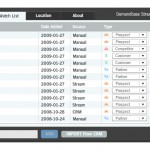
 In the old days, sales people managed the entire sales process: they took leads from the awareness phase, via discovery of possible solutions, to the final validation phase. Today, prospects get much of their information online, and often go through awareness and discovery without ever talking to a sales person. Sales may not be involved, but marketing for sure…
In the old days, sales people managed the entire sales process: they took leads from the awareness phase, via discovery of possible solutions, to the final validation phase. Today, prospects get much of their information online, and often go through awareness and discovery without ever talking to a sales person. Sales may not be involved, but marketing for sure…